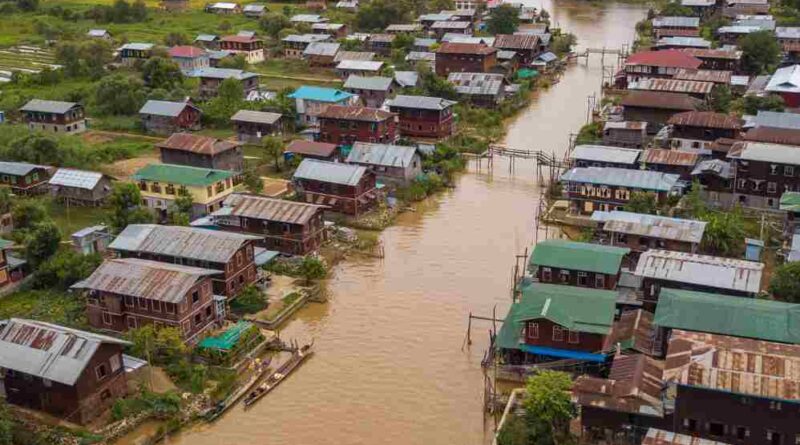Uttarakhand’s Cry for Help: Nature’s Warnings Are Getting Louder—and Deadlier
A Beautiful Land on the Brink
Uttarakhand—often called “Dev Bhoomi” or the Land of the Gods—has long been a place of pilgrimage, peace, and breathtaking Himalayan landscapes. From the icy peaks surrounding Kedarnath to the quiet apple orchards of Dharali, the state draws millions who seek spiritual solace and natural serenity.
But beneath this beauty lies a growing crisis—one that’s unfolding in slow motion, yet striking harder with each passing year.
Floods. Landslides. Glacial lake bursts. Road collapses. The signs aren’t subtle anymore. The question now isn’t whether Uttarakhand is in danger. It’s whether anyone is truly listening.
Kedarnath Wasn’t a One-Off
Back in 2013, the catastrophic floods that ravaged Kedarnath were called a once-in-a-century disaster. But a decade later, similar events are happening with increasing frequency. Monsoon rainfall is growing more erratic and intense, glaciers are retreating, and unstable slopes are giving way under relentless construction.
In fact, what was once considered rare is now frighteningly normal.
Just this year, fresh incidents have highlighted how fragile this mountainous region has become. Massive cracks have appeared in villages like Joshimath. Entire stretches of roads—carved precariously along steep cliffs—have crumbled under sudden cloudbursts. Villagers are losing homes, not over generations, but overnight.
And still, bulldozers roll on.
Dharali: A Village That Tried to Warn Us
Take the quiet hamlet of Dharali in the upper reaches of Uttarkashi district. Surrounded by dense forests and crisscrossed by glacial streams, the village has long been vulnerable to cloudbursts and floods. Elders here recall when the rivers flowed gently and the apple harvests were predictable.
Now, their stories have a different tone. They talk of sudden thunder, landslides, and floods that don’t knock before entering. The Bhagirathi River, once their lifeline, now looms as a constant threat.
Despite this, the push for more roads, hotels, and tourism infrastructure continues—without the kind of environmental checks this delicate terrain demands.
Char Dham, Infinite Pressure
The Char Dham highway project, designed to connect four of the holiest Hindu shrines—Kedarnath, Badrinath, Yamunotri, and Gangotri—is a symbol of modern ambition meeting ancient land. While aimed at making pilgrimage safer and faster, critics say it’s inviting a geological disaster.
Widening roads in the mountains means cutting into rock, displacing trees, and increasing the weight load on unstable soil. It’s not just about what’s being added, but what’s being taken away: the natural buffers that kept landslides and floods at bay for centuries.
And it’s not just environmentalists raising alarms. Local residents, scientists, and even Supreme Court panels have questioned whether the cost of speed and access might be long-term ruin.
Cracks in the Earth, Cracks in the System
When cracks appeared in Joshimath—quite literally splitting walls, roads, and lives—it should have been a wake-up call. Here was a town sinking before our eyes, a direct consequence of excessive tunneling, hydropower drilling, and uncontrolled tourism.
But the response has been inconsistent. Some families have been relocated. Others remain in damaged homes, unsure of where to go or who will help. Promises are made. Committees are formed. And the cycle repeats.
The truth is, nature’s warnings are coming faster than the bureaucracy can draft reports.
Tourism vs. Tradition
Uttarakhand is caught in a tragic tug-of-war. On one side is economic aspiration—bringing in tourists, boosting infrastructure, and creating jobs. On the other is the fragile ecology and the people who have lived in rhythm with it for generations.
For many locals, tourism is a lifeline. But they also know what the mountains can and cannot handle. Traditional knowledge tells them when the clouds feel heavier than usual, when the rivers are “too quiet,” when the wind smells wrong.
That knowledge is being drowned out by concrete and commerce.
A Plea for Sustainable Recovery
This isn’t a call to stop development. It’s a plea to rethink how it’s done. Smart, sustainable infrastructure can still serve the region without destroying it. Eco-sensitive zones must be respected. Hydropower projects need proper geological vetting. Construction should work with the mountain, not against it.
And above all, the voices of the people living there—those who walk the mountain paths daily, not just visit once a year—must be at the center of planning and policy.
Conclusion: If the Hills Fall, So Do We
Uttarakhand’s rising disasters are not isolated events. They are connected—to each other, to climate change, and to how we choose to live on this planet. The state may seem far away from our daily lives, but its fate is tied to choices we all make—about energy, about tourism, about how we value nature.
The gods of the mountains may still bless this land, but the land is pleading for mercy in return.
Before another Kedarnath. Before another Joshimath. Before the hills stop whispering and start screaming.
The time to act isn’t tomorrow. It’s now.
Disclaimer
The information and content shared on digitalgithub.com — including articles, blogs, news, guides, and other resources — is intended for general informational and educational purposes only. We do not guarantee the completeness, reliability, or suitability of any information. Always seek the guidance of a qualified professional before making decisions based on the information you read. Use this site at your own risk.

